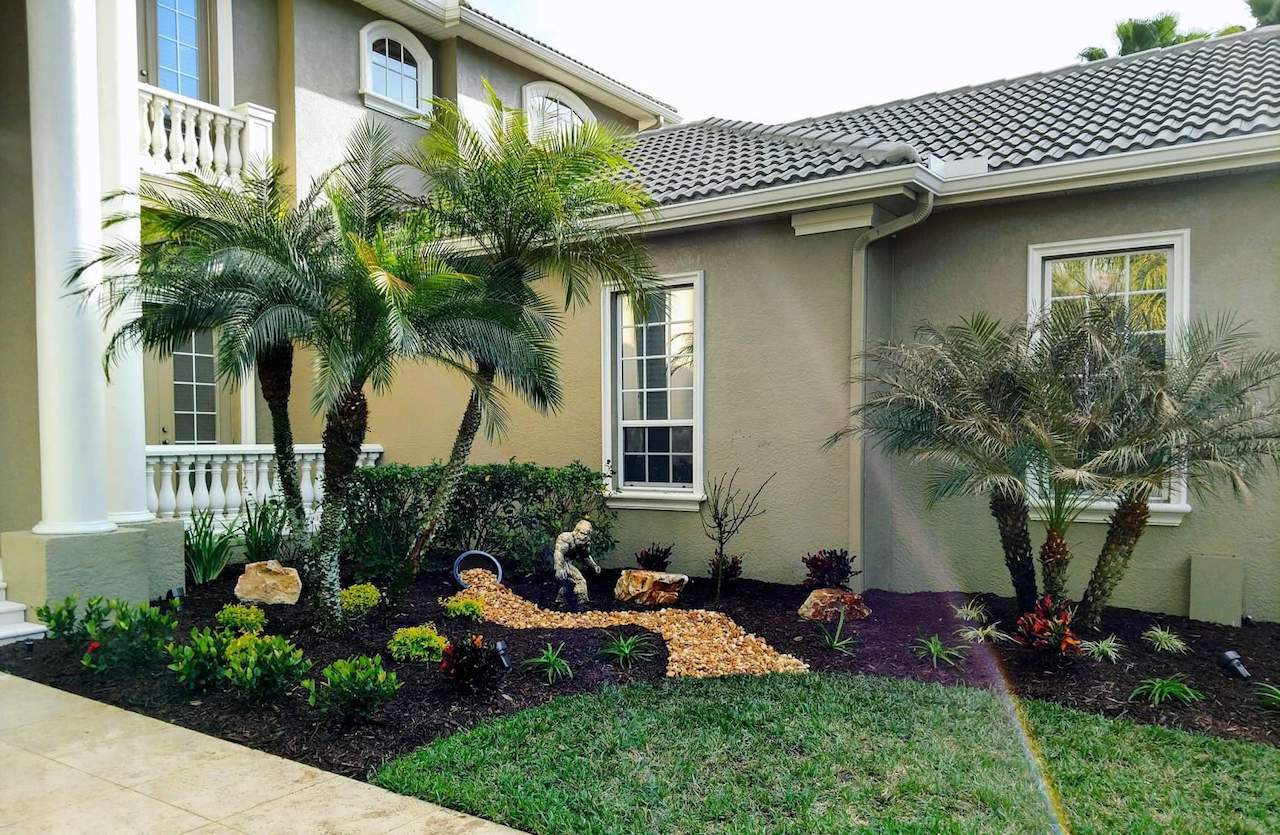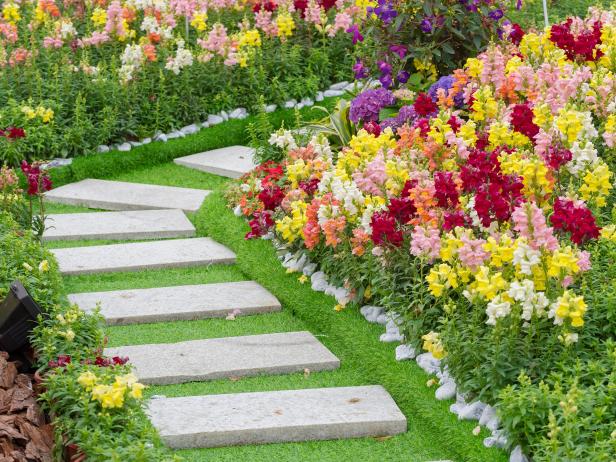A Comprehensive Guide to Creating and Implementing Effective Landscaping Solutions
The art and science of landscape design extend past simple appearances; they involve a thoughtful combination of layout concepts, ecological stewardship, and practical application. What approaches can one utilize to ensure these landscapes not just flourish but also grow in harmony with their surroundings?

Recognizing Landscape Design Concepts
One could question what fundamental aspects add to efficient landscape design. At its core, successful landscape layout depends upon several crucial principles that guide the arrangement and choice of components within an area. These principles include unity, balance, percentage, and rhythm, each offering to produce an unified exterior environment.
Unity describes the cohesive partnership amongst numerous parts, making certain that they collaborate visually and functionally. Balance can be accomplished via balanced or asymmetrical setups, enabling the landscape to feel secure and welcoming. Proportion entails comprehending the scale of aspects in connection with each other and the surrounding environment, promoting aesthetic consistency and comfort.

Analyzing Your Outdoor Area
Before executing the principles of landscape layout, a complete evaluation of your outdoor area is important. This initial analysis helps define the extent of your landscape design project and guarantees that your design straightens with the distinct features of your residential or commercial property. Begin by analyzing the dimensions of your space, taking accurate measurements to comprehend the available location for various elements such as yards, pathways, and patio areas.
Next, observe the existing attributes of your landscape, including topography, dirt high quality, and water drainage patterns. These aspects considerably affect plant selection and placement. Additionally, assess the sunshine exposure throughout various areas throughout the day, as this will certainly impact the sorts of plants that grow in your yard.
Consider the microclimates produced by frameworks, trees, and other obstacles, as they can affect temperature and moisture levels. Last but not least, remember of any existing plants or hardscape elements that you want to eliminate or preserve. This detailed examination prepares for a well-informed and efficient landscape design solution, guaranteeing that your layout is not just visually pleasing however also useful and lasting for years to find.
Lasting Landscaping Techniques
These practices not just promote ecological equilibrium but likewise boost the visual and useful worth of a landscape. Executing effective watering systems, such as drip watering, reduces water waste and guarantees that plants obtain adequate dampness (Palm Desert Landscaping).

Another effective technique is the critical positioning of shrubs and trees to give all-natural windbreaks and color, therefore reducing energy expenses (Palm Desert Landscaping). Rain gardens can be integrated into the landscape style to take care of stormwater runoff effectively, filtering toxins prior to they enter waterways
Picking the Right Plants
Picking the right plants for your landscape is important to attaining both visual appeal and environmental harmony. The process starts with an understanding of your regional climate, dirt conditions, and the details microenvironments within your landscape. Examining elements such as sunlight exposure, dampness levels, and existing vegetations will help you select plants that flourish in your one-of-a-kind setting.
Think about incorporating indigenous plants, as they are well-adapted to regional problems, need less maintenance, and assistance local wild animals. Additionally, picking a diverse selection of types can boost biodiversity while decreasing the risk of illness and parasite break outs. It is necessary to examine the development routines, growing periods, and seasonal colors of prospective plants to produce a vibrant and cohesive landscape.
Moreover, think about the planned use the area; for example, if the area will certainly experience high foot website traffic, select resilient ground covers. By thoughtfully selecting plants that line up with both your ecological requirements and visual objectives, you can develop a lasting landscape that not only enhances your home but also adds favorably to the bordering environment.

Implementation and Upkeep Techniques
When the right plants have actually check here been selected for your landscape, the emphasis changes to efficient implementation and continuous maintenance methods. Successful setup starts with appropriate website preparation, which includes dirt testing to determine nutrient degrees and pH, followed by changing the dirt as needed. Carefully arrange plants according to their growth practices and light requirements, ensuring appropriate spacing to promote healthy growth.
Irrigation is a vital element of execution. Establish a watering timetable that takes into consideration the particular demands of each plant types, readjusting for seasonal changes. Using drip irrigation systems can enhance water performance and lower drainage.
Maintenance methods need to be carried out to guarantee the longevity and vigor of your landscape. Routine tasks include weeding, mulching, and trimming to regulate growth and protect against disease. Fertilizing ought to be conducted based on soil examinations, supplying the needed nutrients without over-fertilizing.
Checking for conditions and bugs is important; early detection can avoid substantial damage. Seasonal adjustments to upkeep regimens, such as winterizing perennials and preparing for springtime growth, will certainly make sure that your landscape remains aesthetically attractive and healthy year-round.
Conclusion
Effective execution and ongoing upkeep even more ensure the long life and vitality of landscapes. By incorporating these elements, landscapes can be transformed into gorgeous, useful atmospheres that advertise biodiversity and contribute favorably to community well-being.
One may question what foundational elements contribute to effective landscape design. At its core, successful landscape design hinges on a number of key concepts that assist the setup and selection of components within a room.Selecting the right plants for your landscape is critical to achieving both aesthetic allure and environmental consistency. It is necessary to review the development routines, blooming periods, and seasonal shades of prospective plants to create her response a cohesive and vibrant landscape.
As soon as the ideal plants have actually been selected for your landscape, the focus shifts to efficient execution and ongoing maintenance techniques.